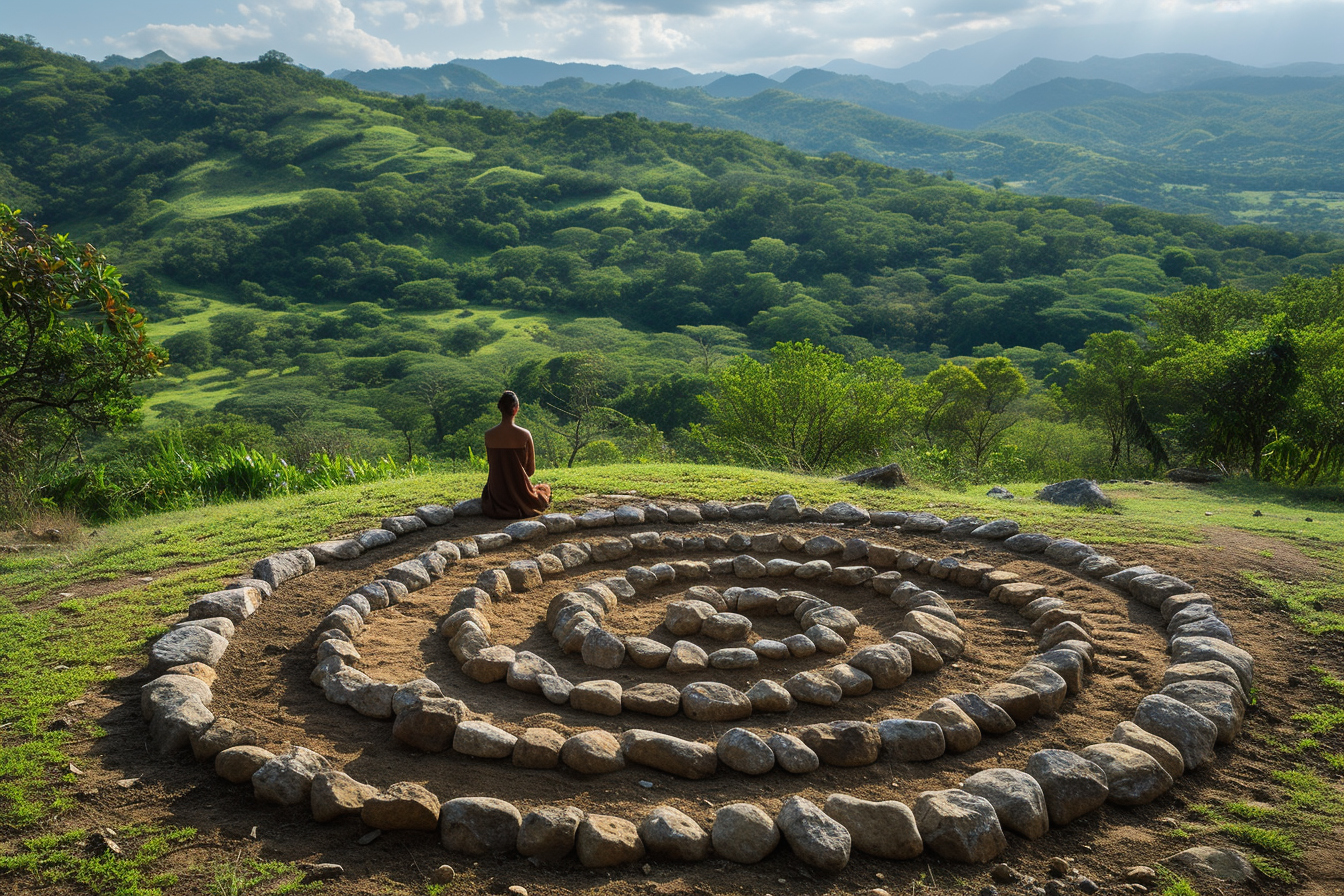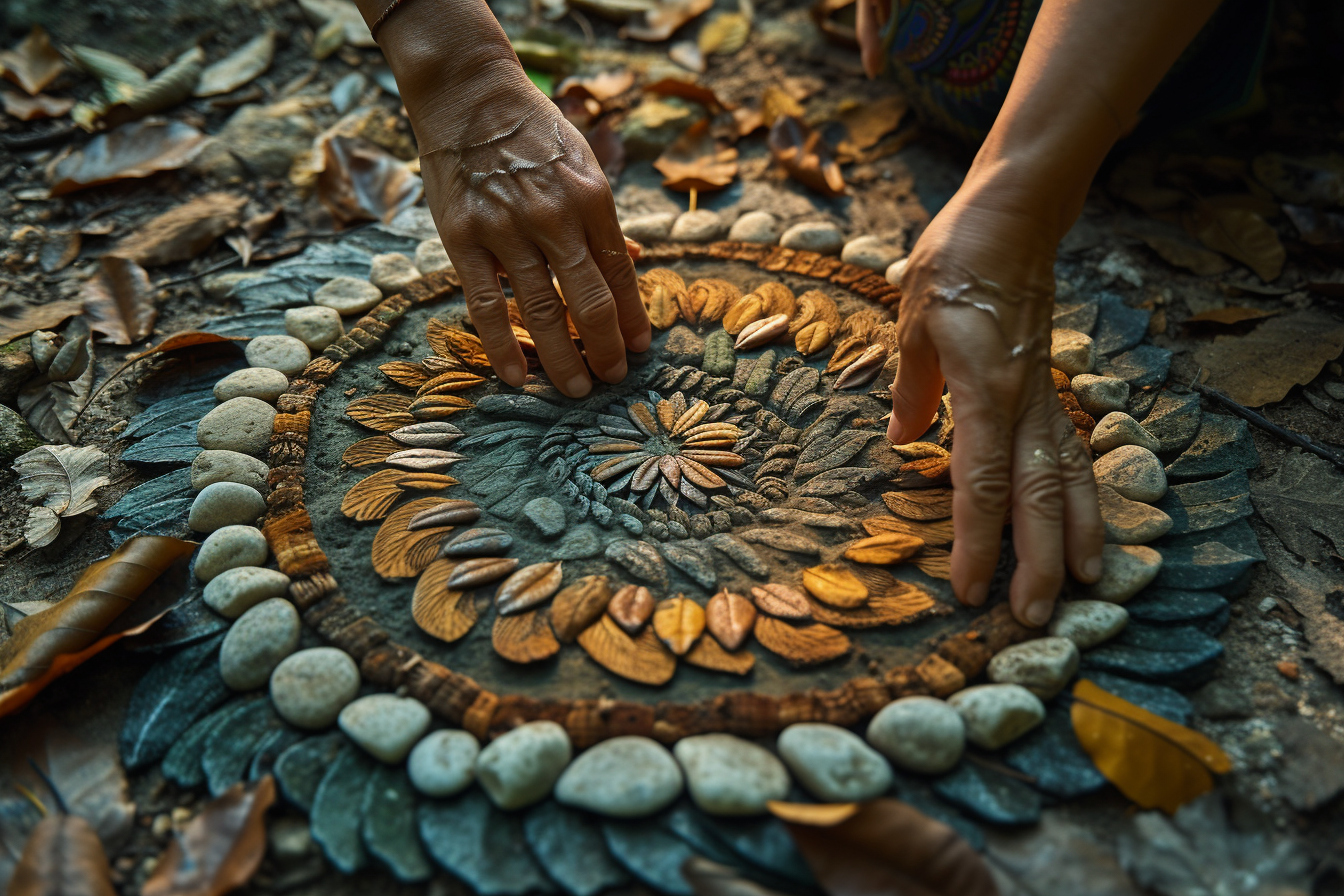Land Art, a movement that gained momentum in the 1960s, is an art form that involves transforming natural landscapes into artistic creations. Unlike traditional artworks confined within gallery walls, Land Art harmonizes artistry with the organic environment, encouraging artists and onlookers to engage with nature in novel ways. The ephemeral nature of this art form as it merges with the elements can offer a stirring commentary on the transient quality of life and the steadfastness of nature.
Understanding the essence of land art

Before embarking on creating Land Art, it is crucial to understand its foundational philosophies. At its core, Land Art embraces the natural world as its canvas, drawing upon materials like stone, water, sand, and wood to craft pieces that resonate with the landscape. An intrinsic element of this art form is its impermanence, which invites contemplation on the passage of time and human interaction with the Earth.
Preparatory steps for land art creation
Selecting the Perfect Location:
Identifying the right site is vital. Ideal locations for Land Art are those that inspire creativity and offer a range of natural materials to work with. The chosen terrain should not just be a backdrop but an active participant in the art itself.
Research and Respect the Environment:
Learn about the chosen ecosystem. Respect for the environment is paramount in Land Art; thus, obtaining any necessary permissions and ensuring that the natural habitat is undisturbed is essential for the ethical creation of Land Art.
Sketch Your Vision:
Translate your concept onto paper with sketches. This helps in visualizing the art and serves as a reference during creation. Be prepared for the design to evolve as you engage with the location’s unique character and resources.
Gathering your materials
Nature offers an abundant palette, but it demands a keen eye to discern the potential of various elements. Consider the following materials, all of which can be found in the natural world and used in crafting your Land Art:
- Stones and Pebbles: Great for creating contrast or defining boundaries.
- Leaves and Branches: Useful for adding texture and color.
- Water: Can be used to reflect the sky or alter the terrain.
- Sand and Soil: Perfect for shaping the landscape or creating height.
Harvest materials responsibly, focusing on what is abundant and renewable. Strive to leave no trace aside from your artwork.
Crafting your land art piece: a step-by-step guide
Step 1: ground preparation
Clear debris and prepare the land where your art will take shape. This initial groundwork lays the blueprint of your creation, ensuring a stable foundation upon which to build.
Step 2: constructing the base
Utilize larger elements like rocks or logs to establish a base. These components offer stability and determine the scale of your artwork, grounding it within the environment.
Step 3: adding structure and form
With the base set, sculpt the main structure of your art piece. Incorporate elements that interplay with the landscape, reflecting its shapes and forms. Attention to detail during this phase is paramount as it dictates the overall silhouette and flow of the creation.
Step 4: weaving in texture and color
Layer leaves, petals, or colored stones to inject vibrancy and dimension. The juxtaposition of textures and hues can create a tapestry that epitomizes the diversity of the natural world.
Step 5: the final touches
Add the smallest elements last. Fine-tune the details, responding to the piece as it evolves. Small adjustments can greatly affect the visual impact of the work.
Step 6: photographing your piece
Capturing your Land Art in photographs creates a lasting record of your work. Contemplate different angles and lighting to best convey the piece’s connection with the environment.
Step 7: leaving no trace
Once the piece is complete, or if it’s time to dismantle it, ensure you leave the environment as you found it. The guiding principle of Land Art is to create without causing harm, engaging with the landscape transiently and respectfully.
Overcoming challenges in land art
Creating Land Art is not without its challenges, but each obstacle offers a lesson in adaptation and problem-solving. Weather conditions, for instance, can dramatically alter the perceived end result, necessitating flexibility in both design and execution. Furthermore, the decay of organic materials emphasizes the fact that Land Art is a temporal expression, reminding artists of the dynamic nature of both their medium and their canvas.
The larger context
Beyond the technical aspects of creating Land Art, it’s essential to recognize its broader implications. As a remarkable intersection of human creativity and nature’s majesty, Land Art can serve as a potent symbol for environmental awareness and sustainability. It prompts us to reflect on our relationship with the Earth and to cherish the impermanent beauty that it presents.
In creating Land Art, artists are not merely crafting an object but rather engaging in a dialogue with the environment. Each piece becomes a spontaneous record of a moment in time, a fusion of human intention and natural evolution.
Delve into nature’s bounty and let the land shape your artistic journey. By crafting Land Art, you foster a unique connection with the environment, create a statement that resonates beyond the visual, and participate in an art form that mirrors the natural cycles of growth, change, and decay. Embrace the landscape as your studio, and let the Earth’s tapestry inform and guide your creative expressions.











